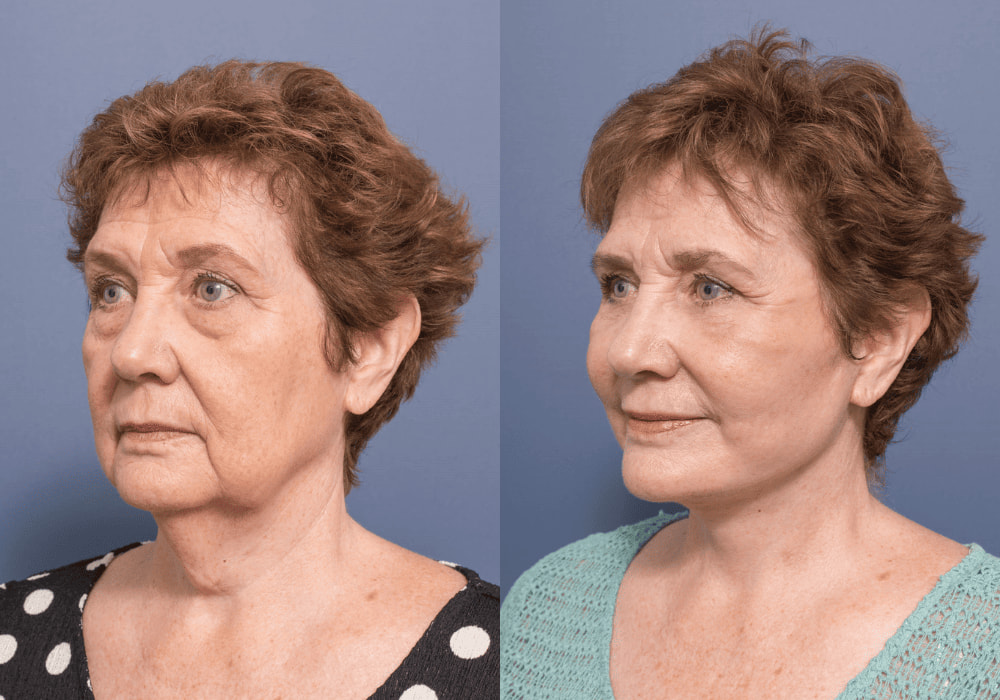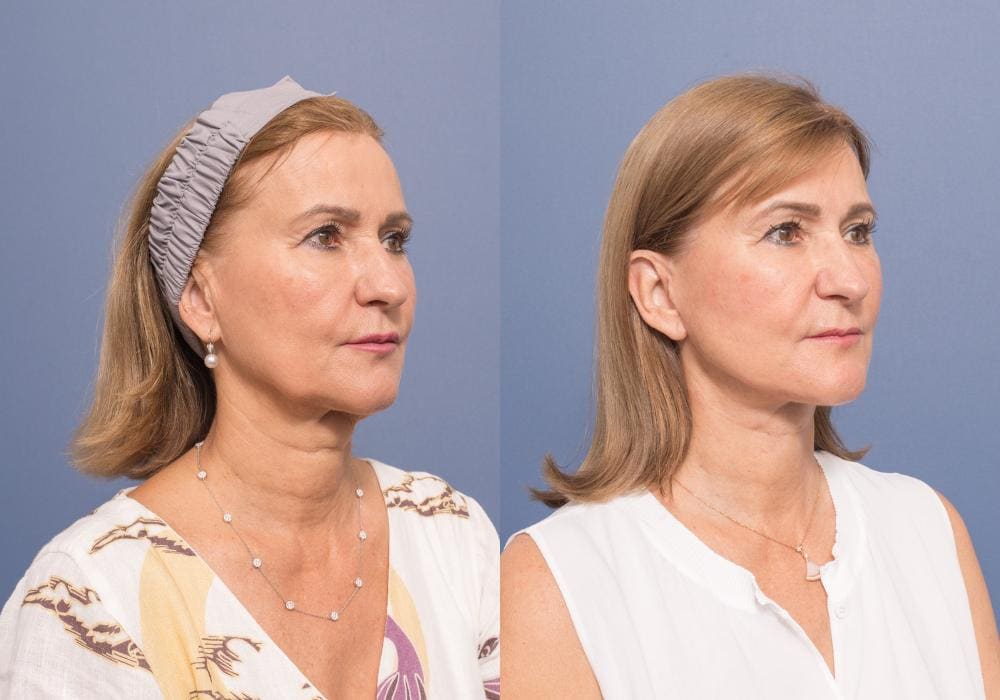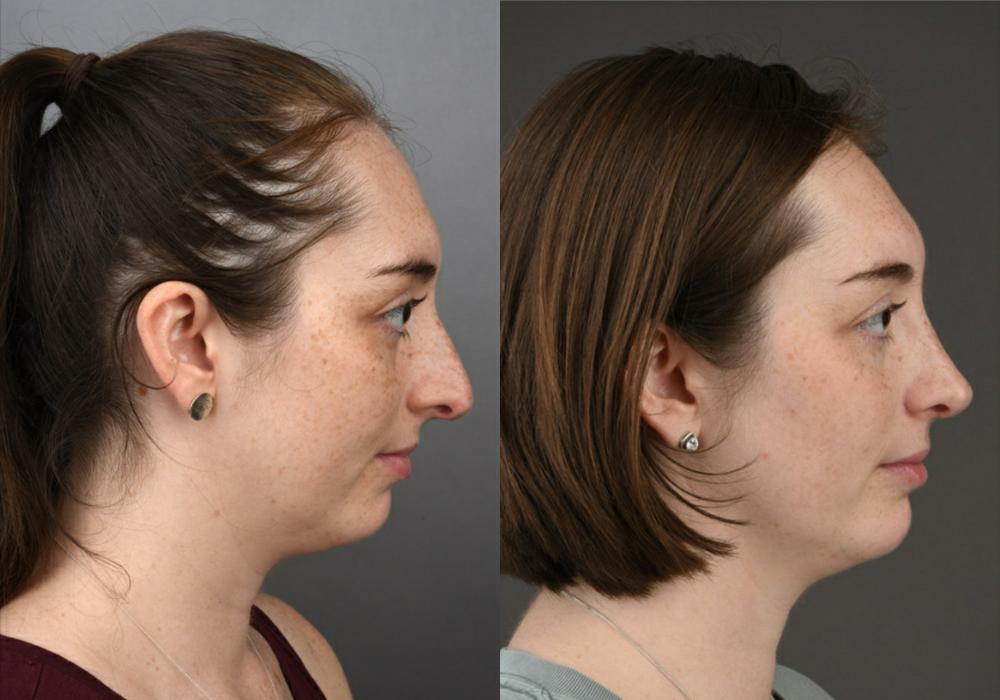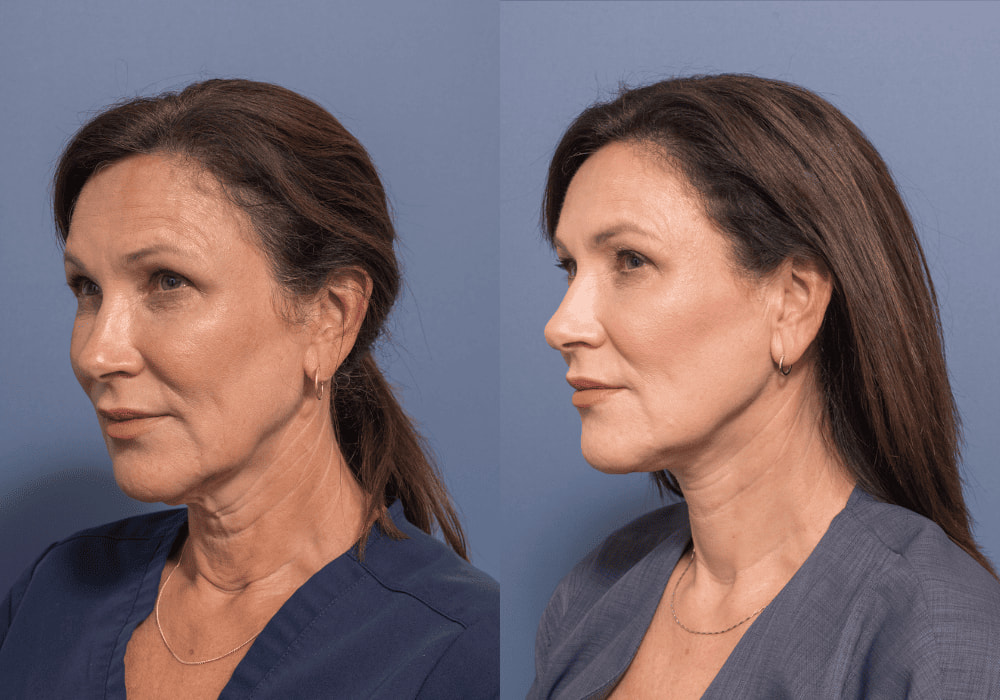
The upper eyelid plays a significant role in defining your facial appearance and expression.
Upper Blepharoplasty: Reduce sagging eyelids and remove excess skin for tighter, less saggy eyelids
What is Upper Blepharoplasty?
Sagging eyelids, and excess skin and puffiness above the eyes can make the face look sad, angry, or tired. Upper blepharoplasty or eyelid surgery can help to rejuvenate your appearance by eliminating bulging fat deposits and excess skin folds. Dr. Honeybrook specialises in customising blepharoplasty techniques to meet your specific needs.
Individuals may feel like they constantly look tired and friends, family, and colleagues may mention they appear exhausted or stressed, even if they are not. Often, this tired appearance is caused by drooping upper eyelids, which may obstruct the vision in severe cases.
To address this issue an upper blepharoplasty, or upper eyelid lift, can improve the appearance of the upper eyelids. This procedure involves tightening and removing excess, sagging skin from the upper eyelids, as well as removing any fat pockets that contribute to drooping.
In some situations, individuals may also experience drooping of the brow and forehead. If this is the case, Dr. Honeybrook may recommend performing a brow lift in addition to an upper blepharoplasty. In certain situations, it may be necessary to perform a lower eyelid surgery as well to ensure the eyelids remain in harmony.
Aging of the Upper Eyelids
The upper eyelids tend to droop due to various age-related factors, such as:
- Dermatochalasis, or excess crepey eyelid skin, which can lead to hooding of the upper eyelid
- Fat development in the inner corners of the upper eyelid, known as medial or nasal fat pads, which appear as small bulges
- Descending brow and forehead tissue, which is generally caused by gravity’s constant pull on the face
Benefits of Upper Blepharoplasty Eye Lid Lift
Upper eyelid surgery, can provide a range of benefits including:
- Restoring brightness and expression to the eyes
- Creating a more refreshed and youthful appearance
- Reducing puffiness and excess skin of the upper eyelid
- Improving “hooding” on the upper eyelid
- Improving an impaired upward visual field
How is an Upper Blepharoplasty Eye Lid Lift Performed?
Dr. Honeybrook makes small incisions in the upper eyelids’ natural folds, known as supratarsal creases. These incisions are carefully placed to be virtually invisible once fully healed.
In cases where individuals have hooding under the brow, the incisions must extend beyond the eyes’ outer corners. During the procedure, excess fat in the eyes’ inner corners may be removed. Dr. Honeybrook may also recommend using a carbon dioxide (CO2) laser to enhance results and resurface the periocular skin. The laser helps to smooth wrinkles and resurfaces the surrounding skin to achieve a youthful eyelid appearance.
Upper eyelid surgery is a simple operation that can be performed under local anaesthetic or in combination with other procedures under general anaesthetic. Individuals typically experience minimal discomfort, and the procedure is generally very well tolerated. After the procedure, individuals can expect some swelling and bruising, but this typically subsides within a week or two. Dr. Honeybrook provides detailed aftercare instructions to ensure a smooth recovery and optimal results.
How to Rejuvenate Hollowing of the Upper Eyelids
As individuals age, some may experience hollowing of the upper eyelids due to the loss of volume in this area. This can result in a deep-set appearance of the eyes. In some cases, hollowness may occur after an aggressive upper eyelid surgery with excessive fat removal.
To rejuvenate hollow upper eyelids, the most effective approach is to restore volume to the area. Dr. Honeybrook typically performs micro fat grafting using harvested fat from other areas of the body, such as the waist or thighs. The processed fat is then carefully injected into the upper eyelids to restore lost volume and create a more youthful, rejuvenated appearance.
Recovery after Upper Blepharoplasty Eye Lid Lift
Compared to other cosmetic surgeries, the recovery period for upper blepharoplasty is relatively quick. Bruising typically subsides within a few days, and individuals can use camouflaging makeup to return to work around a week after the procedure. The final results of the surgery become visible after the swelling subsides, which usually takes a few weeks during the healing process.
Optometry Consultation
In Australia, there is a Medicare item number for upper blepharoplasty surgery (item number 45641) which may cover a small portion of the cost of the procedure if certain criteria are met. To qualify for Medicare coverage, individuals must demonstrate that their excess upper eyelid skin is causing functional problems, such as impaired vision. If an individual believes they have impaired upper vision due to excess upper eyelid skin, they should consult with an optometrist as an optometry assessment is required to claim the item number. Individuals will need to undergo a consultation with Dr. Honeybrook to determine whether they meet the necessary criteria for Medicare coverage.
Note: Any surgical or invasive procedure carries risk. These risks will be discussed with you in detail during the consultation. For further information on risks please refer to the patient resources section of the website.





